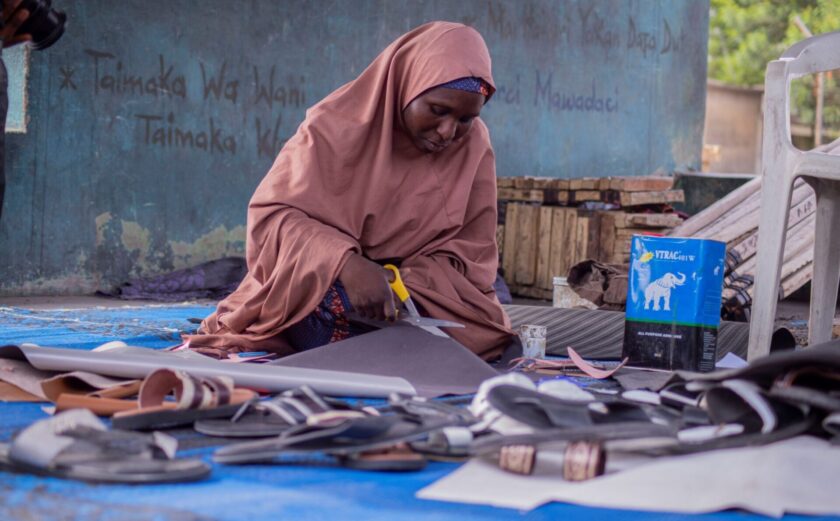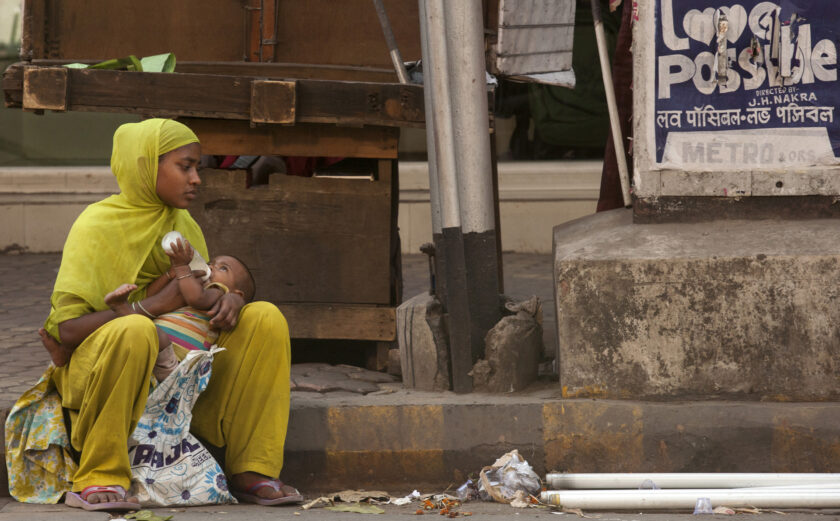
Periods Don’t Stop When Disasters Occur
Reshaping the conversation on menstrual hygiene management in the aftermath of Pakistan’s floods
The recent flooding in Pakistan was unprecedented—affecting 6.4 million people and damaging or destroying over 1,400 health facilities in the Balochistan and Sindh provinces. Of the 6.4 million people affected, roughly half are women with specific sexual and reproductive health needs.
Last month, I spoke with actors on the ground and experts from three local organizations that are responding to the needs of women and girls affected by the floods, while also working to shift the narrative around women’s menstruation.
Key Challenges and Issues
Entire villages have been washed away across the country, separating families who are forced to seek shelter elsewhere and complicating efforts by aid organizations to reach them. In some cases, settlements have formed along the side of highways where latrines and security are lacking, said Mariam Hyder, Shelter and NFI Regional Coordinator at the International Organization for Migration. As social systems that typically provide communities safety and assurance are upended, women in particular face increased challenges and threats. Dr. Sana Ali, Life Skills Education Manager at Aahung, brought attention to the fact that “violence against women increases in the aftermath of a disaster,” which is currently a top concern.
Despite attempts to enhance this year’s response to the floods, difficulties further entrenched in society will be harder to root out. Sobia Kapadia, Senior Project Manager at the Gender, Justice, Security Hub funded by UKRI, explained how patriarchal norms are strong in the flood-affected areas, making it harder for women to express their needs to community workers and access relief packages. Distribution sites can be hostile environments for women, with large crowds and frequent reports of sexual assault.
Mariam said that some camps, however, have shown gender sensitivity by receiving women at the front of distribution lines. Others are consulting both men and women on water, sanitation, and hygiene needs, as well as the locations of shelters and safety of latrines. These more inclusive consultations are setting the stage for a more gender-sensitive approach to planning future emergency responses.
Current efforts by three local organizations
Organizations have held consultations with displaced communities and obstetricians and gynecologists to ensure that menstrual hygiene needs are being met and cultural practices are being respected. Women and girls prefer cloth pads to sanitary pads, noted Hira Amjad, Executive Director of the Dastak Foundation, but cloth pads can’t be provided because they can cause vaginosis when proper cleaning facilities and supplies aren’t available. As a result, Dastak Foundation is providing displaced women with cotton pads and rolls and is currently looking into more sustainable alternatives, such as seaweed cloth.
Hira expressed further concern about a prevalent misperception that the medication for vaginosis can cause infertility, often leaving vaginosis untreated. At times, men also prevented women from seeking medical attention for their infections, she said. Male outreach partners were initially hesitant to contribute to sexual and reproductive health efforts, but as the response continued and online platforms spread awareness of the importance of the programs, volunteers became more comfortable. This new awareness made it more acceptable for female volunteers to travel to conflict-affected areas to distribute hygiene products.
This year’s floods caused many to look back at 2010 when flooding caused similar levels of destruction. As Bushra Mahnoor, Co-Founder of Mahwari Justice, recalls: “I was visiting a relief camp and saw a young girl with blood stains on her clothing. When my mother approached the girl, (she) explained that she got her first period in the camp and had torn a piece of her dupatta to absorb the period flow.” The experience prompted Bushra to launch a campaign to help provide menstrual hygiene materials and medications.
Some organizations providing this service faced backlash from people who did not consider menstrual hygiene supplies to be a need comparable to food and shelter. “You can provide food, shelter, and menstrual products. These are not mutually exclusive,” added Bushra. Her Co-Founder, Anum Khalid, reiterated this sentiment, saying that inaccessibility to period products is a form of violence.
To combat the stigmas around menstruation, Aahung has focused on building the capacity of female health workers, youth champions, key community influencers, and local support organizations to promote and protect adolescent sexual and reproductive health and rights and to educate communities on issues such as menstrual health, family planning, and the prevention and treatment of infections like urinary tract infections.
Recommendations
In light of the difficulties stemming from the emergency response, here are three recommendations for operational actors:
- Crisis-affected communities must be centered in the design and implementation of humanitarian response to respond effectively to longer-term impacts.
- Men and boys should be engaged as agents for change when breaking down the stigma around menstruation and period products by having these conversations at the household level.
- When designing response programs, organizations should work alongside religious leaders to help break the taboo of menstruation and separate cultural views from religious views in the community.
Mahwari Justice, Dastak Foundation, and Aahung organization are just three of the many local organizations shifting the narrative on menstruation and breaking down the social taboos surrounding menstrual hygiene and women’s health.
Women-led organizations have been proactive in responding to the needs of women and girls affected by the flooding through immediate relief services, such as distribution of hygiene kits, menstrual products, and medications. As the response to the floods continues, it is critical to ensure that these women-led organizations hold a regular seat at the table, have the power to influence strategic decision-making, and are provided with the funding needed to build on their successes.








